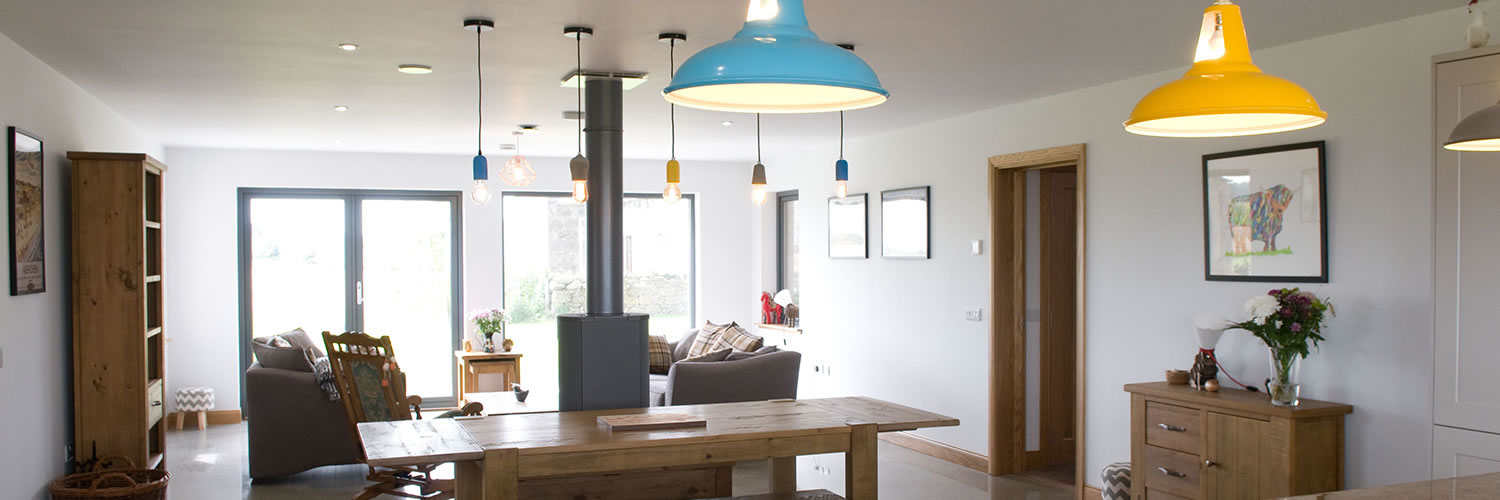Building a new home?
The major advantages of timber frame construction are its speed of erection, excellent thermal efficiency, sound performance and of course its considerable advantages over traditional building methods where environmental issues are concerned.
Timber frame is design flexible. It allows you great freedom in choosing the finished form of your home. It is also fully recognised by all financial institutions and building societies for institutional lending and by the National House Building Council (NHBC) for guarantee purposes.
In ideal conditions a house constructed in timber frame can be wind and weather tight in days and completed in as little as 6 – 8 weeks.Similarly, accurate detailing ensures an acoustic performance notably better than that required by regulations.
The Structural Timber Association (STA) promotes the use of structural timber products and systems within the UK construction industry. Formerly known as the UK Timber Frame Association (UKTFA), the enlarged Association now includes suppliers of integrated hybrid solutions as well as traditional timber frame kits.
Top Tips for Self Builders
With impressive environmental credentials and cost efficiencies, timber is increasingly becoming the building material of choice for self-builders, currently accounting for around 75% of the market.
Building your own home can be extremely rewarding in many ways, including financially, and building your own home using timber as the main structural component gives you a great head-start.
Structural timber delivers a whole host of advantages, in both the long and short term – it’s sustainable, economic, thermally efficient and can be constructed quickly. In short, it’s a great way to build!
Faster construction
- Using timber saves around 30% of build time for a two storey house.
- Your home can be erected and watertight in around 5 days.
- Factory prefabrication makes for simple on site assembly.
Cost benefits
- Using timber allows for more accurate budgeting.
- The finished building is better insulated, making your energy bills lower.
Kinder to the environment
- Structural timber has the lowest overall CO2 cost of any building material.
- For every m3 of wood used instead of other building materials, 0.8 tonnes of CO2 is saved.
Better thermal efficiency
- Structural timber easily exceeds current Building Regulation requirements.
- Superior thermal efficiency means that the building remains warmer in the winter and cool in the summer.
Greater accuracy and design flexibility
- Guaranteed accuracy, with components fitting together exactly as designed.
- New systems allow for timber to be used in more applications than ever before.
Planning the Project
- Establish a realistic budget and include a sensible contingency – about 10% of your overall budget. In most cases this sum is used towards completion of the project for upgrading interior fittings etc.
- Take time to thoroughly research your project. Package house kit companies such as ourselves and architects are a huge source of inspiration and new ideas when designing your home and can give valuable advice.
- Consult your planning office at an early stage. They are there to help and can give invaluable advice on any regulations which may exist in your local area which could affect your site location or house design and may save you time at a later date.
- Always consult a solicitor before you purchase your land in order to check that any deeds or covenants do not exist on neighbouring plots which may restrict access to your site.
- Whoever you choose to help you, take time to check them out and insist on no hidden extras. Bona fide companies and trade people will gladly provide references.
- Get building work warranted. Use an NHBC builder where possible and ensure that architects and surveyors have professional insurance.
- Never be put off the fact you have no experience of building – most self builders and converters are in the same boat.

